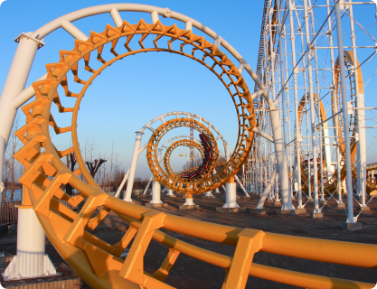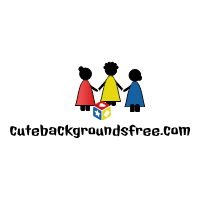When you’re considering purchasing a roller coaster in China, understanding the pricing structure is vital for making an informed decision. The cost of a roller coaster varies based on several key factors, each of which impacts the overall price. These factors include the type and design of the ride, the materials used, the size and complexity of the attraction, and additional features that contribute to both safety and entertainment value. By exploring these elements, you can gain a clearer idea of what to expect when budgeting for your next amusement ride investment.

The Influence of Ride Type and Design on Pricing
Steel Roller Coasters: The Premium Thrill Rides
Steel roller coasters (американские горки) are among the most popular and sought-after thrill rides in the amusement park industry. The price of these rides is typically higher compared to other types due to their sophisticated design, cutting-edge technology, and advanced safety features. The intricate engineering involved in crafting a steel roller coaster ensures that it can deliver high-speed, intense experiences for thrill-seekers.
Steel coasters are designed to accommodate more complex elements such as inversions, twists, loops, and vertical drops, all of which enhance the thrill and excitement for riders. Additionally, steel coasters can be customized with various special effects like lighting, music, and even virtual reality elements, further driving up the price. These rides offer an immersive experience that appeals to a wide range of visitors, making them a valuable investment for larger amusement parks or theme parks looking to attract a diverse audience.
While the initial cost of a steel roller coaster can be significant, their durability and ability to generate high revenue through thrilling experiences make them a long-term investment. The lifespan of a steel coaster also tends to be longer, which further justifies the higher upfront costs.
Wooden Roller Coasters: The Classic Appeal
Wooden roller coasters (аттракцион гусеница), though slightly more affordable than their steel counterparts, still provide an exciting and nostalgic ride experience. These coasters are known for their classic charm, often offering a more rustic or retro vibe compared to the modern design of steel coasters. While the price of a wooden coaster may be lower, it is important to consider ongoing maintenance costs. Wooden coasters require more frequent upkeep due to the natural wear and tear of the materials, including the wood, which can be susceptible to weather conditions.
In terms of design, wooden coasters generally lack the complex loops and inversions found in steel rides. However, they can still deliver a thrilling experience with high-speed drops and sharp turns, often featuring a more “out-of-control” feeling that many riders enjoy. The simplicity of a wooden coaster’s design can also make it a good option for smaller parks or those with a more traditional theme.
While a wooden roller coaster might be less expensive initially, its maintenance and renovation requirements can add up over time. Thus, when deciding between wooden and steel coasters, it’s important to factor in not just the purchase price but the long-term investment needed to maintain the ride.
Specialty Roller Coasters: Unique Thrills and Higher Costs
Specialty coasters, including spinning coasters, inverted coasters, and water rides, add a unique element to amusement parks and are often priced higher due to their innovative designs. These coasters are built to deliver specialized experiences that cannot be replicated by traditional steel or wooden rides.
For example, spinning coasters provide a dynamic ride experience where the cars rotate as they navigate the track, creating unpredictable movements that add to the thrill. Inverted coasters, on the other hand, hang riders below the track, intensifying the sense of speed and excitement as they travel upside down or through vertical loops.
Water coasters combine the thrill of a traditional roller coaster with water elements, adding splash zones and water jets that increase the overall sensory experience. These rides (купить аттракционы) require additional technology and materials, which can drive up the price. The specialized engineering and safety features required for these unique thrill rides often result in a higher cost compared to more conventional designs.
Ride Size and Track Length: How Scale Affects the Price
Small and Medium-Sized Rides: Affordable Options for Smaller Parks
The size of the roller coaster plays a significant role in determining the overall cost. Smaller thrill rides (экстремальные аттракционы), such as kiddie coasters or compact family-friendly attractions, are typically less expensive due to their simpler design and shorter track lengths. These rides are ideal for smaller amusement parks or locations with limited space, where a large, high-speed roller coaster would not be feasible.
Kiddie coasters and smaller thrill rides are also more affordable because they are designed to accommodate fewer riders at a time and generally feature fewer intricate design elements. Although these rides may not have the high-energy loops and drops of larger coasters, they still provide an enjoyable experience for families and young visitors.
Large, High-Capacity Rides: More Expensive Due to Scale
On the other end of the spectrum, large roller coasters designed for major theme parks or high-capacity amusement parks will come with a higher price tag. These rides are typically designed to accommodate more people per cycle, which requires more extensive engineering and higher-quality materials. The longer track lengths, multiple cars, and greater complexity of these coasters contribute to their increased cost.
Large roller coasters often come with additional features such as advanced safety systems, powerful motors, and elaborate theming. These rides may also require more land area for installation, further increasing their overall price. The cost of the ride, combined with the installation and maintenance expenses, makes these larger thrill rides a significant investment for parks looking to provide top-tier experiences to their visitors.
Comparing Prices from Multiple Suppliers: Getting the Best Value
When purchasing a roller coaster from China, it’s essential to compare prices from multiple manufacturers to ensure you’re getting the best deal. Prices can vary based on the specific design, materials, and features of the ride, so getting multiple quotes allows you to make an informed decision. Don’t hesitate to reach out to manufacturers directly to clarify any additional costs, such as shipping and installation fees, that may affect the final price.
Negotiate for Better Pricing
Once you’ve gathered quotes, try negotiating with manufacturers to secure the best possible price, especially if you’re ordering in bulk or making a large investment. Many suppliers are open to offering discounts or flexible pricing terms, particularly if you’re willing to compromise on certain features.
Conclusion: Making an Informed Purchase Decision
In conclusion, understanding the factors that affect roller coaster pricing in China is essential for making an informed investment. The type of ride, its size, and its unique features all contribute to the final cost. By comparing different suppliers, considering the long-term maintenance costs, and negotiating effectively, you can ensure that you find a roller coaster that delivers excellent value for your money. Whether you’re investing in a small kiddie coaster or a large, high-speed thrill ride, China’s amusement ride market offers a variety of options to suit your needs and budget.
